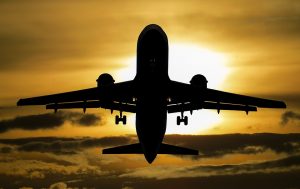 Boeing is one step closer to completing its massive 777X jet. Earlier this month, the aerospace manufacturing giant unveiled the first test model of its massive twin-engine jet in Evernett, Washington. This was the first time that Boeing has revealed the physical, tangible design of the 777X. And while it probably won’t be available to purchase for several years, it may one day become a standard aircraft in the fleets of countless commercial airlines.
Boeing is one step closer to completing its massive 777X jet. Earlier this month, the aerospace manufacturing giant unveiled the first test model of its massive twin-engine jet in Evernett, Washington. This was the first time that Boeing has revealed the physical, tangible design of the 777X. And while it probably won’t be available to purchase for several years, it may one day become a standard aircraft in the fleets of countless commercial airlines.
So, what does Boeing hope to accomplish with its newly unveiled 777X jet? The jet displayed by Boeing in Evernett will be used for testing. With that said, Boeing won’t use the test model for live flight testing. Rather, Boeing says that it will perform one year of on-the-ground testing to ensure that it’s safe and ready for the skies.
Of course, the 777x test model doesn’t feature all the necessary components for live flight testing. Reports indicate, for example, that it’s missing an engine as well as communications and navigation systems. Therefore, Boeing will spend the next year testing the jet on the ground.
With a seating capacity of 314 to 396 passengers, the 777X is the world’s largest twin-engine jet. While large in size, however, it also has an impressive distance. According to Wikipedia, the 777X is capable of flying up to 8,555 nautical miles. Boeing has emphasized the importance of fuel efficiency in the jet’s design. The 777X’s new engine is said to improve its fuel efficiency by 10%, while its carbon fiber wings offer a 7 percent improvement.
A key feature of the 777X that shouldn’t be overlooked is its folding wingtips. Because of its massive size, the 777X isn’t able to taxi through many standard gates at airports. Therefore, Boeing designed the jet with a 12-foot section on the wingtips that can be folded. Once on the runway, pilots can fold the 777X’s wings to navigate through the otherwise crowded and tight gates.
“We’ve been in tests for several years for different components of this aircraft, starting with wind tunnels, into smaller component structure and the systems integration laboratory,” said Boeing’s Doreen Bingo in an interview with Aeronautics Online. “The static test really represents the home stretch of our test program because we build the full-scale articles for lab and flight test.”
Boeing’s 777X is expected to enter service in 2020. The aerospace manufacturing company has already sold units of the massive twin-engine jet to airlines such as Lufthansa and Emirates.



